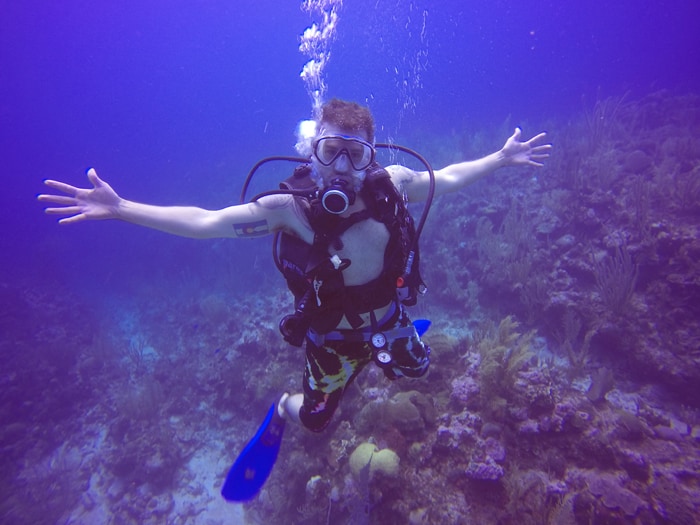One of Guanacaste’s distinguishing features is the Pacific Ocean, and a diverse selection of water sports in the northwestern province offers plenty of opportunity not to have to be a landlubber. One sport pulls you out onto the ocean surface and down under: diving.
First, the “bad” news about diving in Guanacaste, if you could call it that, and you really shouldn’t: Diving in this sector of the Pacific coast doesn’t offer the storied visibility of similar excursions off the islands of the Caribbean, according to Viviane Beckers of Resort Divers de Costa Rica.
But, as she always tells clients, “You can see lots, and big.” “There’s always so much emphasis on visibility,” says Frank Joyce, biologist and avid diver. “There is so much nature to see that every dive is satisfying,” he quickly adds.
Joyce likens the activity to visiting a cloud forest – the goal is to observe nature up close. “But you don’t expect to be able to see the Pacific Ocean from there,” he explains. Perhaps oddly, that lesser visibility translates into ample marine life in this nutrient rich sector of the Pacific coast and creates some unexpected tradeoffs about where and when to partake of the sport.
The December-April dry season, corresponding to Costa Rica’s high tourist season, means trade winds that hit the ocean surface strongly, according to Joyce. That causes an upwelling in which cold water moves toward the surface, circulating nutrients. This attracts marine life, but means slightly cloudier waters.
It also means chillier water – expect temperatures of 20-23 degrees Celsius (68-74 Fahrenheit) December to March, compared to 25-29 C (78-86 F) the rest of the year, according to Beckers – and the winds might mean a choppier boat ride to the dive site.
The low tourist season means less wind, less water circulation and better visibility, Joyce says – plan on 80 feet at this time of year, instead of the 20 feet the dry season offers – but there really is no bad time of year to go diving in Guanacaste.
The biodiversity accompanying diving –white-tipped sharks and sting rays, manta rays, really, all types of rays, sea turtles and spotted and bottle-nosed dolphins are all visible up here – makes it not just another water sport like jet skiing, according to Joyce, who is working with local communities to seek ways to provide economically viable alternatives to fishing (TT, Apr. 22, 2005).
The Catalina Islands, with ghostly manta rays that congregate from January to April, and the bull shark-populated Murciélago Islands remain Guanacaste’s two most famous long-range dive sites. But closer in lie many sites, such as Punta Gorda, Bajo Tiburones, Virador and Los Meros, all approximately 10 kilometers off the coast, and a 20-25 minute boat ride – quite a short journey in diving circles.
Minor Lara of the Cuajiniquil-based Reef del Norte frequently takes divers to the wreck site of a Spanish ship that sank in 14-meter water just off the northern coast at Playa Blanca during World War II. A second wreck sits in the depths of nearby Bahía Salinas, but extremely dark waters mean he doesn’t bother with that site.
Realistically, diving’s southernmost limits on the northern Pacific coast lie at the Las Baulas National Marine Park, according to Toni Onofri of Tamarindo’s AguaRicaDivingCenter. The decision by the Costa Rican Fisheries Institute (INCOPESCA) to permit fishing within the park’s boundaries risks decreasing the amount of marine life, but has not yet done so, she says.
Most outfitters offer instructional certification internationally recognized by organizations such as the Professional Association of Diving Instructors (PADI). Plan on investing about $400 a week, more or less, for a beginner’s certification course.
Many also take you on a one-day “get acquainted with diving” mini-course. You won’t become certified, but you will get a taste of diving and know if you want to pursue the activity even deeper.








